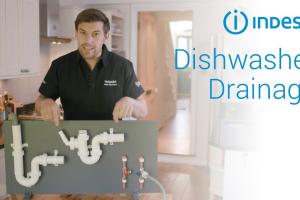Ultimate Guide to Fixing Dishwasher Drainage Issues: Troubleshooting & Solutions

-
Quick Links:
- Introduction
- Understanding Dishwasher Drainage
- Common Dishwasher Drainage Issues
- Step-by-Step Troubleshooting
- Solutions to Fix Drainage Issues
- Preventive Maintenance Tips
- Case Studies
- Expert Insights
- FAQs
Introduction
Dishwashers are essential appliances in modern kitchens, providing convenience and saving time. However, when a dishwasher develops drainage issues, it can lead to frustration and a backlog of dirty dishes. This comprehensive guide aims to help homeowners troubleshoot and resolve common drainage problems effectively. From identifying symptoms to implementing solutions, we will cover everything you need to know.
Understanding Dishwasher Drainage
The dishwasher's drainage system is crucial for its operation. It typically includes components like the drain hose, filter, and drain pump. Understanding how these parts work together can help you diagnose and fix drainage issues more effectively.
How the Drainage System Works
When a dishwasher completes its wash cycle, it pumps out the dirty water through the drain hose, which directs it to the household plumbing. If any part of this system malfunctions, water can accumulate, leading to poor performance or leaks.
Common Dishwasher Drainage Issues
- Water not draining
- Dirty water remaining at the bottom
- Strange noises during drainage
- Leaking water around the dishwasher
Step-by-Step Troubleshooting
1. Check the Drain Hose
The drain hose is a common culprit behind drainage issues. Here’s how to inspect it:
- Unplug the dishwasher and pull it away from the wall.
- Examine the drain hose for kinks or clogs.
- Remove the hose from both the dishwasher and sink connection to check for blockages.
- Use a long brush or a plumbing snake to clear any obstructions.
2. Inspect the Filter
Most dishwashers have a filter that prevents food debris from clogging the drain. Here's how to clean it:
- Locate the filter at the bottom of the dishwasher.
- Remove the filter by twisting it counterclockwise.
- Rinse it under warm water to remove any stuck debris.
- Reinstall the filter securely.
3. Check the Drain Pump
The drain pump is responsible for pushing water out of the dishwasher. If it's malfunctioning, follow these steps:
- Access the drain pump by removing the lower spray arm and cover.
- Inspect the pump for debris or blockages.
- Test the pump for electrical issues using a multimeter.
Solutions to Fix Drainage Issues
1. Replace the Drain Hose
If the drain hose is damaged or too old, replacing it might be necessary. Ensure you buy a hose that fits your dishwasher model.
2. Clean or Replace the Filter
Keeping the filter clean is essential for proper drainage. If it’s damaged, consider replacing it with a new one.
3. Repair or Replace the Drain Pump
If the drain pump is faulty, you may need to repair or replace it. Consult a professional if you’re unsure how to proceed.
Preventive Maintenance Tips
- Regularly clean the filter.
- Run the dishwasher with a cleaning agent monthly.
- Check for blockages in the drain hose periodically.
Case Studies
Case Study 1: Household Experience
One homeowner faced persistent drainage issues, leading to frequent service calls. After following the troubleshooting steps outlined in this guide, they discovered a kink in the drain hose that was easily fixed. This simple solution saved them hundreds in repair costs.
Case Study 2: Commercial Dishwasher
A local restaurant struggled with their commercial dishwasher frequently backing up. After inspecting the drain pump and hose, they found a significant clog in the hose that was affecting the drainage. Clearing this resolved their issues, demonstrating the importance of regular maintenance.
Expert Insights
Experts recommend that homeowners familiarize themselves with the basic components of their dishwasher. Regular maintenance can prevent most drainage issues, saving time and money in the long run. In case of persistent issues, consulting a professional is advised.
FAQs
1. What should I do if my dishwasher is not draining?
Check the drain hose, filter, and drain pump for blockages or damage.
2. How often should I clean my dishwasher filter?
It's best to clean the filter at least once a month.
3. Can I use vinegar to clean my dishwasher?
Yes, running a cycle with vinegar can help remove buildup and odors.
4. How do I know if my drain pump is broken?
If you hear unusual noises or water is not draining, the pump might be faulty.
5. What are the signs of a clogged drain hose?
Signs include water pooling at the bottom of the dishwasher and slow drainage.
6. Is it safe to repair my dishwasher myself?
Yes, but ensure that you follow safety precautions and consult the manual.
7. What tools do I need for dishwasher repair?
Common tools include screwdrivers, pliers, and a multimeter for electrical checks.
8. How can I prevent dishwasher drainage issues?
Regular maintenance and avoiding overloading the dishwasher can help prevent issues.
9. When should I call a professional?
If troubleshooting does not resolve the issue, or if you're uncomfortable with repairs, call a professional.
10. Are there any specific brands that are more prone to drainage issues?
While all brands can experience issues, some older models may have more frequent problems due to wear and tear.
Random Reads